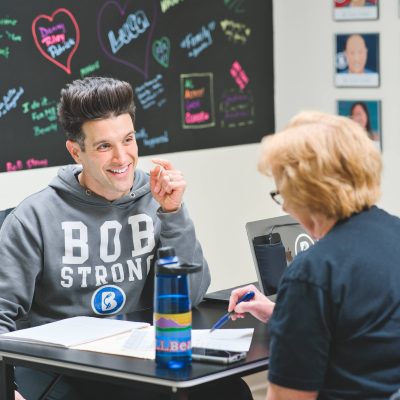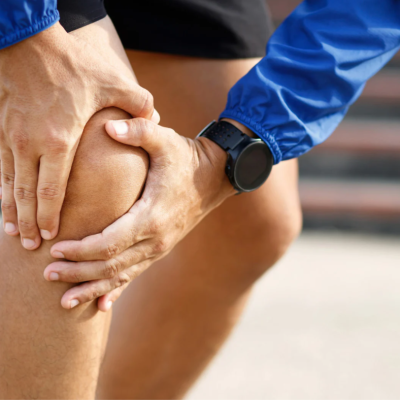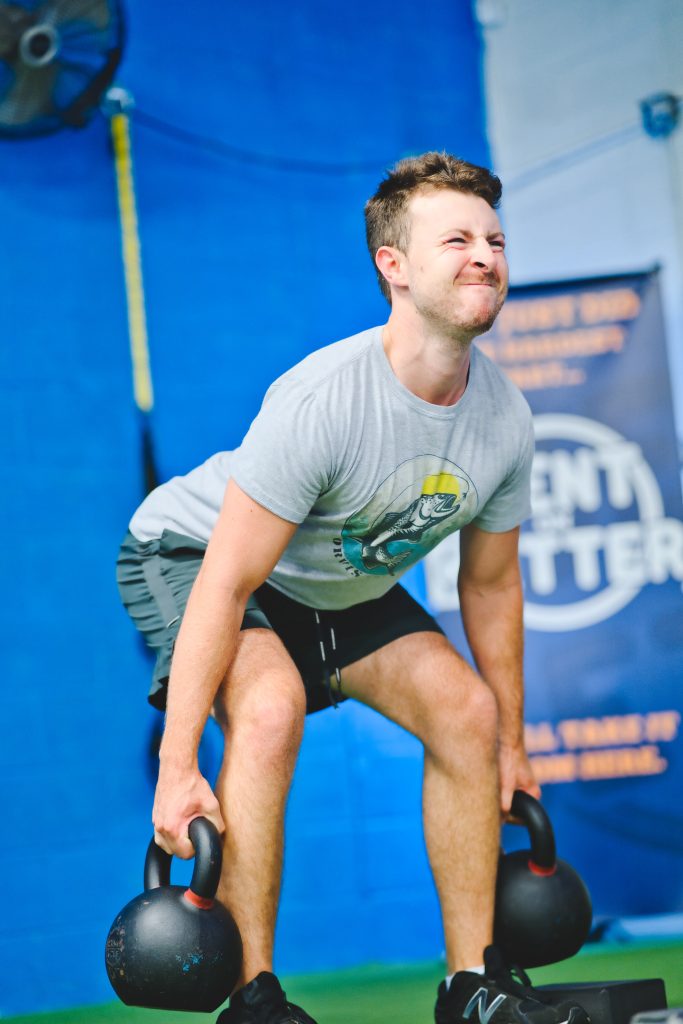As coaches at Bent On Better, we have vast audiences who have experienced injuries throughout their life or from other gyms. The main misconception about being in pain is that we should stop moving the painful body part altogether in hopes of relieving pain. We’re here to set the record straight on exactly how you can push through the pain and turn out to be at least 1% better. In this post, we’ll discuss the difference between feeling pain and feeling discomfort, what to do to help alleviate that pain, and how you can build resilience from pain.
Pain as You Grow Older
When the podcast episode was recorded, our coaches, Matt and Nick April had just celebrated their mom’s 60th birthday. They looked back on how their mom had broken her back and now has to do stretches every day to ensure she is in tip-top shape. Like her, we also have members who have experienced different injuries but have accepted that pain as a part of their life and even expect to feel body pain as they grow older.
We want everyone to understand that pain is not a requisite for growing older. Pain is not necessarily good or bad, and some people experience it more than others. This is why before starting your program, we at Bent On Better like to paint a better picture for people who experience pain and how to address it.

Bent On Better’s Pre-Workout Assessment
We start our assessment by giving our members a complimentary 1-on-1 session introducing who they are and what they had experienced in the past regarding fitness, including past injuries or recurring pain. Next, we have a full assessment of their baseline movement, wherein we monitor our member’s form when doing specific exercises. If something is off, we will ask them if they feel pain in a particular body part or which area they have trouble moving.
Chronic Pain Vs. Discomfort
We describe chronic pain as feeling pain from a recurring injury, and even that isn’t created equal. People may experience pain in the same area but for different reasons. For example, if you have shoulder pain, you might feel like that area hurts, especially when you try to chug a gallon of milk. Logically, if you keep drinking that gallon of milk, the container should feel lighter. However, if you still experience pain even by just lifting, this should be enough cause to tell your physician because something might actually need to be checked.

The Healthy Aspect of Pain
On the “healthy” aspect of pain, however, you might be experiencing more discomfort than actual pain. We describe the discomfort as something members might experience after starting any new program or any new movement. For example, when you bend down to pick something up, you don’t really think about the technicality of how you’re squatting. Being part of a gym and having a fitness coach monitor your movement, you will learn that we actually use basic gym movements more often in real life. This makes it just as important to make sure we’re doing a movement correctly to avoid injury while doing everyday chores–even if that means feeling more discomfort than usual. Your body will appreciate the effort and you’ll notice how much better you are moving in the next months.
When doing an exercise for the first time and feeling discomfort, we need to learn to maneuver our movements with proper guidance a little gentler or even do it slower. We need to keep progressing with our movements to ensure you can avoid pain and injury in the long-run.
How To Get Rid of Pain
There are two steps to getting rid of pain, first is identifying what type of pain you are feeling. Based on that observation, you either go to a medical professional to get medical advice. This option is reserved for serious cases, or if your fitness coach determines it as so, or you push through the discomfort you’re feeling.

You can feel sluggish from muscle soreness but taking your joints to different ranges of movement without resistance, you’ll find yourself pushing around the pain you feel in your muscles. Pain is an immune response and through movement, you’re ushering out that toxicity out of your body to help you heal and recover. Even when that fear of experiencing more pain is making you skeptical to get back to working out, showing up is better than not showing up at all.
At Bent On Better, we use our personal record week to determine which movements or exercises or weights are too much for your body at the moment then train to a number closer to that or lower to that instead and build up resistance so you can move forward to reach that goal. When you’re training you are pushing toward those discomfort boundaries. Talk to somebody who knows how to differentiate those signals so you know how to maneuver through your movements. Understand your limitations and learn how to back off and treat them exactly how you would when you’re at the gym (by taking a step back and lowering the intensity of the movement).
Last and the most important way to recover is to get 7 to 9 hours of sleep. Your body repairs its tissues while you sleep, and that’ll help relieve your pain. You can’t keep yourself running on empty, or else you’re going to break down because you’re not giving yourself enough energy to sleep.
Conclusion
As we mentioned before, there are different types of pain, and learning to identify them will help us figure out if this is something that needs to get checked out by a medical professional or if this is something that you need to push through. Pain is our body’s way of telling us that something is wrong and that we might need to get to the root of it.
“Sometimes we get too caught off in this idea of just going through the motions. One of those days, if you’re not feeling it, showing up is better than not showing up at all. Showing up and then knowing that if you’re normally performing at a 7 out of 10 and you’re not feeling it that day, get it addressed by your coach to make sure you’re doing things properly with the right mechanics. See if you can get out of that pain or discomfort. But if not, it’s okay. Give yourself the permission to back off. Instead of being a 7 out of 10 (in intensity), be a 4 out of 10, and that’s okay. That’s how we make consistent changes over time.”-B.O.B. Fitness Coach, Matt April
If you have pain, you are not broken. There is always a way to maneuver that pain and find some solution. Just because you have pain in that area doesn’t mean you will have it for the rest of your life. There is a way to get rid of it.
Watch the Video Here:

